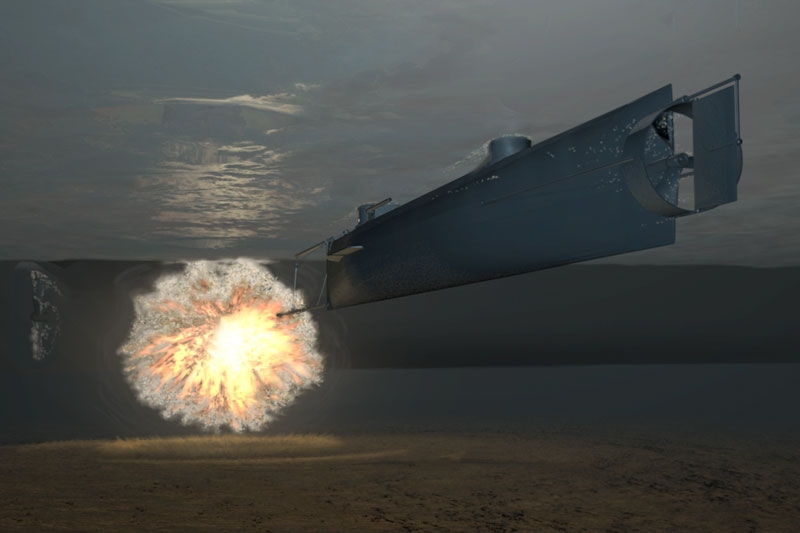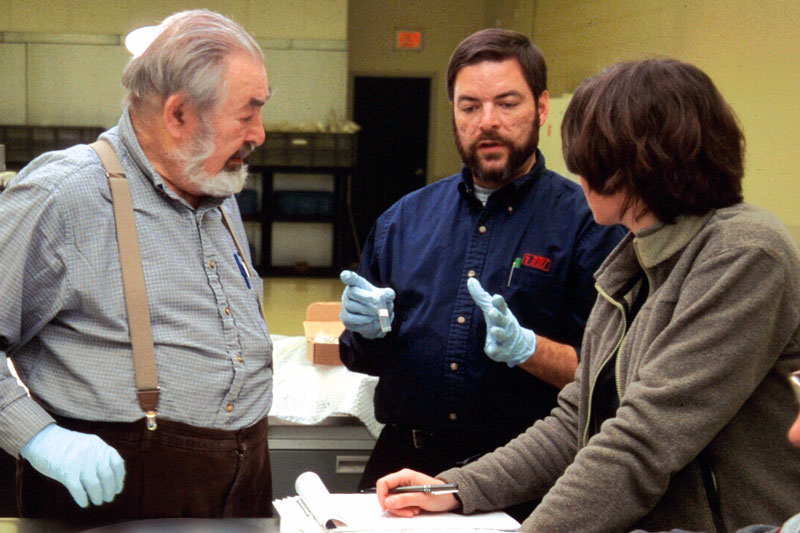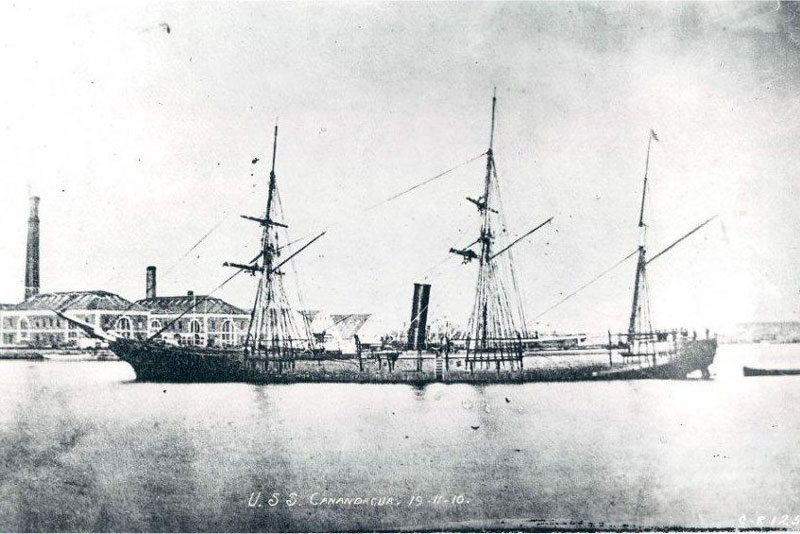The Housatonic sank in shallow waters and many of the crew climbed up its rigging to wait for help. The first ship on the scene was the USS Canandaigua. During the subsequent Union inquiry into the Housatonic’s loss, one of its survivors, Robert Fleming, offered the following testimony:
“…while I was in the fore-rigging, I saw a blue light on the water just ahead of the Canandaigua and on the starboard quarter of the Housatonic.”
Blue lights were the Hunley’s signal to shore that her mission was successful. Fleming’s testimony suggests the Hunley did indeed survive the mission.
However, if the Canandaigua was moving quickly to get to the scene, she could have clipped the Hunley in passing. The impact created may have been undetectable by the Canandaigua’s crew, but deadly to the Hunley. The damage could have caused the Hunley to take on water or else to lose balance and tumble to her demise.
After seeing the surprise explosion, all the Union ships blockading Charleston Harbor hurriedly moved in to rescue survivors. The massive movement of ships would have created large wakes, adding tremendous volume to the already choppy waters off the coast of Charleston. The water displacement could have been hazardous for the Hunley.
If Dixon opened the forward hatch to replenish oxygen or to display the blue light signal, a large swell or wave could have swamped the vessel. With too much water onboard, the submarine could have been thrown off kilter or lost buoyancy.




